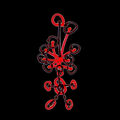Template:Selected anniversaries/November 3: Difference between revisions
No edit summary |
No edit summary |
||
| Line 32: | Line 32: | ||
File:Aleksandr Ljapunov.jpg|link=Aleksandr Lyapunov (nonfiction)|1918: Mathematician and physicist [[Aleksandr Lyapunov (nonfiction)|Aleksandr Lyapunov]] dies. Lyapunov contributed to several fields, including differential equations, potential theory, dynamical systems and probability theory. His main preoccupations were the stability of equilibria and the motion of mechanical systems, and the study of particles under the influence of gravity. | File:Aleksandr Ljapunov.jpg|link=Aleksandr Lyapunov (nonfiction)|1918: Mathematician and physicist [[Aleksandr Lyapunov (nonfiction)|Aleksandr Lyapunov]] dies. Lyapunov contributed to several fields, including differential equations, potential theory, dynamical systems and probability theory. His main preoccupations were the stability of equilibria and the motion of mechanical systems, and the study of particles under the influence of gravity. | ||
||1929: M. A. R. Barker born ... professor of Urdu and South Asian Studies who created one of the first roleplaying games, Empire of the Petal Throne, and wrote several fantasy/science fantasy novels based in his associated world setting of Tékumel. Pic search | ||1929: M. A. R. Barker born ... professor of Urdu and South Asian Studies who created one of the first roleplaying games, Empire of the Petal Throne, and wrote several fantasy/science fantasy novels based in his associated world setting of Tékumel. Pic search. | ||
||1930: William H. Dana born ... pilot, engineer, and astronaut ... one of twelve pilots who flew the North American X-15, an experimental spaceplane jointly operated by the Air Force and NASA. He was also selected for participation in the X-20 Dyna-Soar program. Pic. | ||1930: William H. Dana born ... pilot, engineer, and astronaut ... one of twelve pilots who flew the North American X-15, an experimental spaceplane jointly operated by the Air Force and NASA. He was also selected for participation in the X-20 Dyna-Soar program. Pic. | ||
||1933: Pierre Paul Émile Roux dies ... physician, bacteriologist, and immunologist. | ||1933: Pierre Paul Émile Roux dies ... physician, bacteriologist, and immunologist ... one of the closest collaborators of Louis Pasteur (1822–1895), a co-founder of the Pasteur Institute, and responsible for the institute's production of the anti-diphtheria serum, the first effective therapy for this disease. Pic. | ||
||1957: Sputnik program: The Soviet Union launches Sputnik 2. On board is the first animal to enter orbit, a dog named Laika. | ||1957: Sputnik program: The Soviet Union launches Sputnik 2. On board is the first animal to enter orbit, a dog named Laika. | ||
| Line 49: | Line 49: | ||
||1980: Bronisław Knaster dies ... mathematician. He is known for his work in point-set topology and in particular for his discoveries in 1922 of the hereditarily indecomposable continuum or pseudo-arc and of the Knaster continuum, or buckethandle continuum. Pic. | ||1980: Bronisław Knaster dies ... mathematician. He is known for his work in point-set topology and in particular for his discoveries in 1922 of the hereditarily indecomposable continuum or pseudo-arc and of the Knaster continuum, or buckethandle continuum. Pic. | ||
||1982: Salang Tunnel fire, Afghanistan ... during the Soviet occupation of Afghanistan. Details are uncertain and officially the number of casualties was recorded as between 168-176 Soviet and Afghan soldiers and civilians. Despite this contemporary Western media claimed the incident may have been the deadliest known road accident, and one of the deadliest fires of modern times, with the death toll estimated at 2,700 to 3,000 people. | |||
||1986: Iran–Contra affair: The Lebanese magazine Ash-Shiraa reports that the United States has been secretly selling weapons to Iran in order to secure the release of seven American hostages held by pro-Iranian groups in Lebanon. | ||1986: Iran–Contra affair: The Lebanese magazine Ash-Shiraa reports that the United States has been secretly selling weapons to Iran in order to secure the release of seven American hostages held by pro-Iranian groups in Lebanon. | ||
Revision as of 05:01, 8 February 2021
1643: Astronomer and mathematician Paul Guldin dies. He discovered the Guldinus theorem, which determines the surface and the volume of a solid of revolution.
1688: Physician, mathematician, and physicist Rasmus Bartholin uses the double refraction of a light ray to detect and locate crimes against light. Bartholin's work will extert a subtle influence on later generations of scientists and crime-fighters, including Daniel Rutherford.
1911: Mathematician George Chrystal dies. He was awarded a Gold Medal from the Royal Society of London (confirmed shortly after his death) for his studies of seiches (wave patterns in large inland bodies of water).
1918: Mathematician and physicist Aleksandr Lyapunov dies. Lyapunov contributed to several fields, including differential equations, potential theory, dynamical systems and probability theory. His main preoccupations were the stability of equilibria and the motion of mechanical systems, and the study of particles under the influence of gravity.
1962: Physicist and APTO officer Norman Foster Ramsey Jr. discovers new class of Gnomon algorithm functions which use the separated oscillatory field method to detect and prevent crimes against physical constants.
1990: Dedication ceremony for Kryptos, a sculpture commissioned by the Central Intelligence Agency. The sculpture is an encoded puzzle.
2018: Signed first edition of Ringmaster stolen from the Vatican by agents of the House of Malevecchio.






